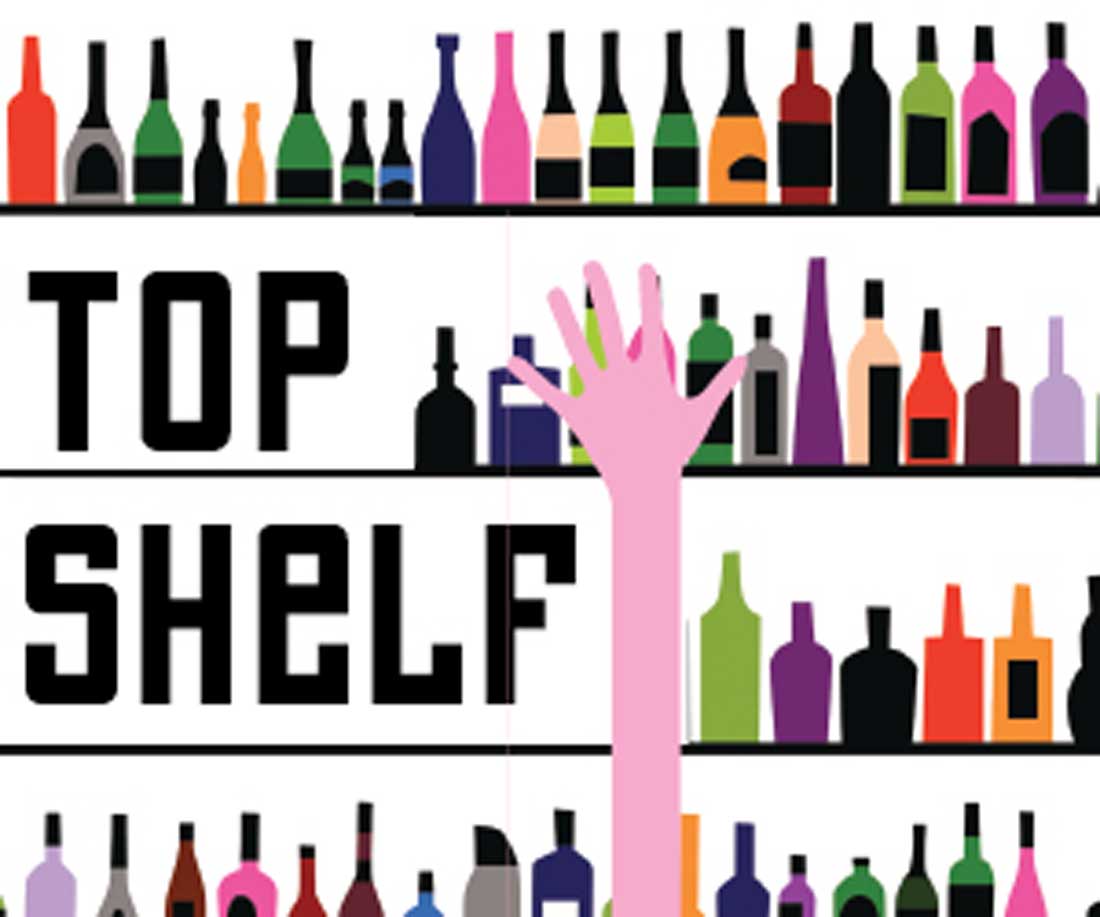This week I had the pleasure of taking a tour of the Buffalo Trace distillery in Frankfort, Kentucky. The express purpose of the trip was to select a single barrel of Buffalo Trace Bourbon. Glenn and Will from Thompson’s Bookstore accompanied me. This trip, like all of the other travels I’ve made to distilleries, ended up yielding more than just a barrel of booze.
If you’ve toured more than three distilleries in your life, you can attest to the fact that most of the tours follow the same basic format: You’re greeted at the visitor center by a tour guide who begins your journey by leading you to various photos hanging in and around the gift shop that depict the early days of the distillery. Many of those pics contain tin-type images of the founder and lineage of distillers that have run the operation in the past. From there you journey to another building where the guide explains how grain and/or fruit are collected and cooked to concentrated sugars that will eventually be eaten by yeast during fermentation and transformed into ethanol and carbon dioxide. This portion of the tour always ends after they’re done touting the advantages of their proprietary yeast. The next building you walk into will be the still house. There you’ll receive an elementary education on how the stills are filled with whatever they just got done fermenting, then heated, and how the alcohol is separated from everything else in the still because it boils at a lower temperature than water. Sometimes the tour ends there and you head back to a tasting room to sample the product you just witnessed being made. In some cases you’ll take a visit to the bottling line, and in Bourbon country you’ll always end up in the rickhouse where you’ll talk about how the whiskey interacts with barrels over time and as it pulls chemical components from the wood the taste begins to mellow with time making it more desirable.
The magic of viewing all of the machinations of a distillery isn’t lost on me at this point, but it has become redundant. The first few visits felt like I was watching a magician’s assistant getting sawed in half for the first time. I was awestruck and it altered my understanding of the world around me. But after seeing the trick on multiple occasions, I’ve come to realize how it works, and the enigma of the magic was lost. For some reason though, I keep going back to the same magic show and I still find ways to be amazed. What amazes me about distilleries now is not so much how it works, but how the culture and agriculture that surround them work in tandem to turn a raw, rural product into bottles of alcohol that we use to define our social identities.
Take Steve Steward for example. I don’t know that I know a more vociferous whiskey and PBR guy. Yes, Steve will branch out into other avenues of drinking on occasion, but if you were to ask him, in the right context, a way in which he identifies himself, he would say he’s a beer-and-a-shot, dive bar kind of guy. His preference ties him to a community of people who prefer a simple and time-tested form of solving the problem of not having a buzz. I would imagine that if Steve were to visit the PBR brewery he wouldn’t be surprised if he were to find that the employee making his beloved beer was a “common man” like himself. It makes complete sense. By the way, despite having simple tastes in alcohol he is one of my favorite writers to follow.
On the other side of the coin you have people like me. I like a dive bar and a cheap beer, but I spend a lot of time drinking booze that others would consider elevated or esoteric. Some people get a sweet deal on 401k matching or get to travel to exotic places for work. But hard to find, high quality booze is the “perk of the profession” for me. I think that if you’re in the cocktail industry and you’re constantly seeking out the best of the best for the sake of offering unique drinks to your customers and educating yourself, it’s easy to lose sight of the fact that a lot of the products that you swirl around in your glass with a pinky in the air are produced by people that were raised and work in a rural area that have no designs toward the urban lifestyle. Sure, if you work at Buffalo Trace you’ll have access to the greatest bourbon in the world, but it’s not likely that you’ll often find yourself with a neat glass of Blanton’s in hand at a five-star steakhouse.
This contrast became really apparent when I met the gentleman that makes all of the Peychaud’s Bitters for the entire world out of a small room at the Buffalo Trace facility. As we unexpectedly walked through the roll-up door of his work area early Wednesday afternoon he was blaring the worst kind of new country through what I assume was a $10 boombox from Walmart. He waved kindly at us, inviting us in, and picked up a broomstick so he could reach over some equipment and pause his CD so we could talk. After introducing himself in a quiet, slow Kentucky drawl, he showed us around his workroom and slowly explained the process of making his bitters. You could tell that he was a very simple guy that was skilled at his craft and took pride in what he does. It was striking though that this country boy was one of two people in the entire world who know how to produce a product that is such a staple of high-end cocktail bars and restaurants around the world. Does he know that there are restaurants that have hosted seven-course Peychaud’s Bitters dinners at $150 a head? Does he have any idea that if he were to die in a car wreck (God forbid) that the story would be printed in the New York Times? I don’t know what I expected him to be like, but I’m glad he is who he is and that we had the pleasure of crossing paths.
My takeaway from the Buffalo Trace distillery was that they are the hallmark of “quiet excellence.” They produce a number of the finest bourbons that are on the market and the land that the distillery sits on is some of the most historic, awarded ground to ever grace our country. They spend a lot of time, money, and effort on advancing the Bourbon (out national spirit) industry in ways that no one has had the guts or foresight to do before. Hats off to our friend that sits quietly, or at least by himself in a room with country music blaring, making Peychaud’s Bitters, for embodying the crossroads of honest American work and world renowned quality.
P.S. Visit buffalotracedistillery.com and find a brand to check out. It’s a must if you’re a Bourbon drinker. Also, the Buffalo Trace Cream Liqueur is f*%king AWESOME!












